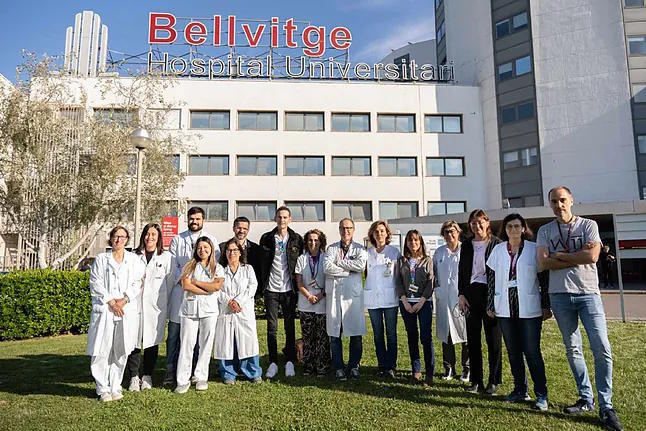Pancreatic cancer is silent and remains hidden until it has spread outside the organ. By then, it is often too late. Surgery is not always possible. According to the Spanish Society of Medical Oncology (SEOM), the scalpel is used in two specific cases: to remove tumors located in the head of the pancreas, and to cut those located in the body and tail of the organ.
Now, a third option could be added. Large tumors in the head of the pancreas attached to several venous branches that cannot be removed without cutting several blood vessels, and therefore were considered inoperable until now, now have a highly complex surgical option: resection with intraoperative ileo-caval venous shunt.
The Hepatobiliary Pancreatic Surgery Unit of the Bellvitge University Hospital, in Hospitalet de Llobregat, Barcelona (Spain), has successfully performed, for the first time in Spain, this technique characterized by creating a bypass conduit (shunt or bypass) between the ileal vein and the vena cava before starting the tumor resection. After removing the tumor mass (without affecting margins), it is reconnected to the portal vein.
This allows the blood to continue circulating temporarily during the two-hour complex tumor resection, preventing necrosis of the intestines or liver due to lack of blood supply.
The first patient operated on was a 45-year-old man with a tumor in the head of the pancreas affecting the ileal, jejunal, and splenic veins, as well as other venous branches. The first intervention was performed on March 5th by the team led by Juli Busquets, head of the Hepatobiliary Pancreatic Surgery section of the General and Digestive Surgery Service at Bellvitge. Busquets trained to perform this technique with Elena Rangelova from Sahlgrenska University Hospital in Gothenburg, Sweden, an international reference in the field.
Busquets explained that the first case they treated was complex, but they opted for this new technique because the patient was young, in good health, and after six months of oncological treatment, the disease had not progressed.
In his opinion, the technique opens a window to intervene in locally advanced aggressive tumors surrounded by veins or arteries. He pointed out that not long ago, in 2010, they started operating on tumors at an earlier stage, known as intermediate or borderline resectable. However, he emphasized that the progress in surgery for this disease is possible due to the contributions of chemotherapy and radiotherapy. "If the disease progresses, surgery is not an option," he reiterated.
He also noted that creating new connections between two blood vessels in the abdomen is a very old technique used, for example, in liver transplants.
With a 3D planning model
The operation was also possible due to the prior development of an advanced 3D surgical planning model, which accurately reproduced the shape and position of the tumor and the affected vascular organs and structures. The surgeon was able to use the model to study the tumor's situation beforehand and decide on the best surgical strategy to follow.
Busquets considers this prior planning "one of the keys" to success with this new technique. Another key, as highlighted by the surgeon, is the work in a multidisciplinary team. In response to this, he recommended that this type of technique be performed in reference centers for vascular and oncological surgery. Regarding the possibility of performing it with robotic surgery, he said it is "complicated" but does not rule it out, given the increasing indications for the use of this technology.
Reference center for Catalonia
It is worth mentioning that Bellvitge is a reference center in pancreatic surgery, especially in the resection of locally advanced pancreatic tumors. Its Hepatobiliary Pancreatic Surgery Unit, established over thirty years ago by the recently deceased Joan Fabregat, is a reference center for these complex interventions.
The Bellvitge unit performs the highest volume of pancreatic surgery in Catalonia, with over 300 interventions in the last five years. Additionally, it has recently become a leader in robotic pancreatic surgery, a modality that allows for precise interventions and faster patient recovery.
A testament to Bellvitge's leading role in this specialty is Busquets' recent participation in the international meeting Rediscover, aimed at developing a global consensus on the management of locally advanced and borderline resectable pancreatic cancer, as highlighted by the center.
Busquets has revealed that they have applied for accreditation as a CSUR (Centers, Services, Units of Reference of the National Health System) from the Ministry of Health and are awaiting a response.
